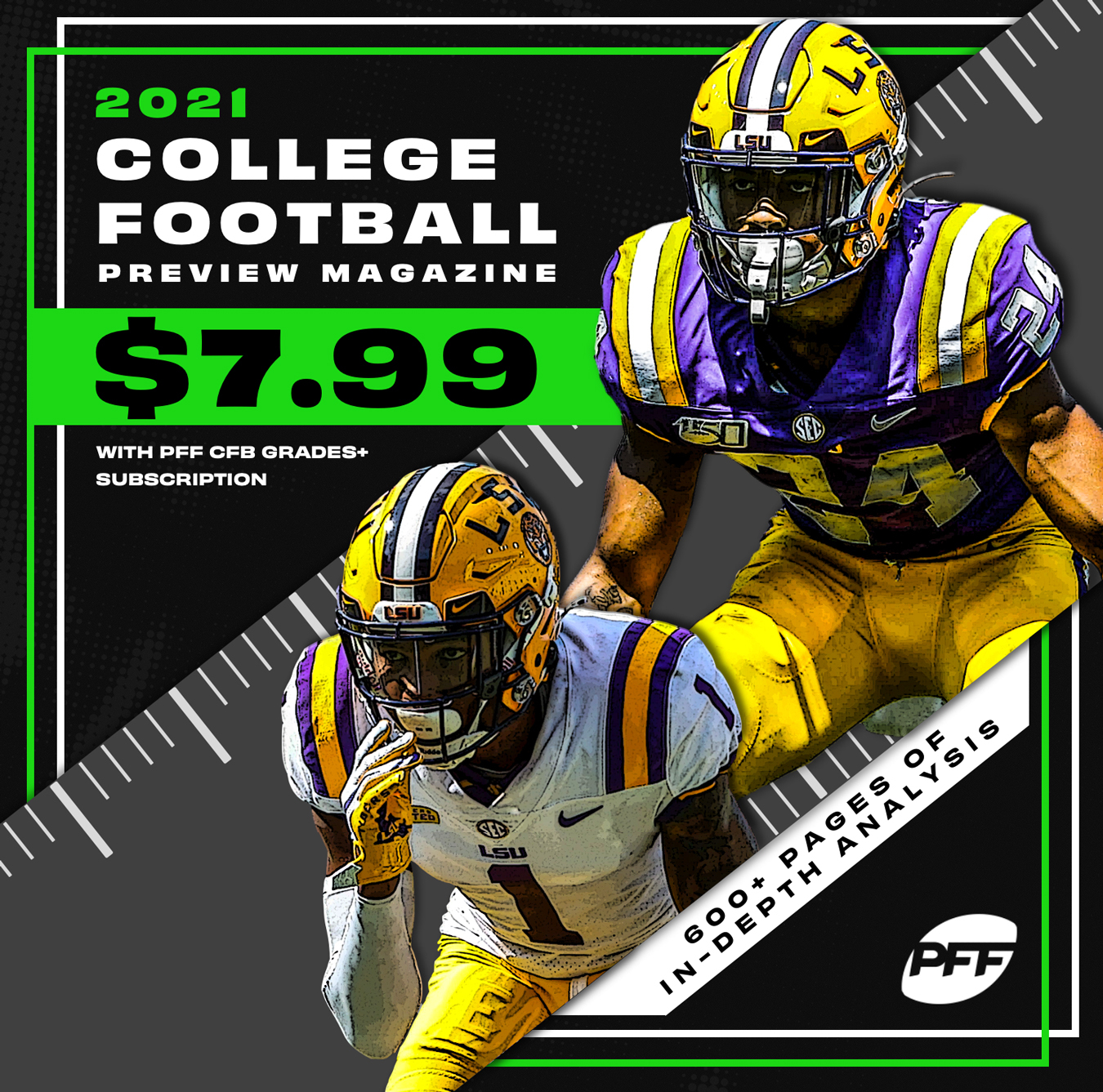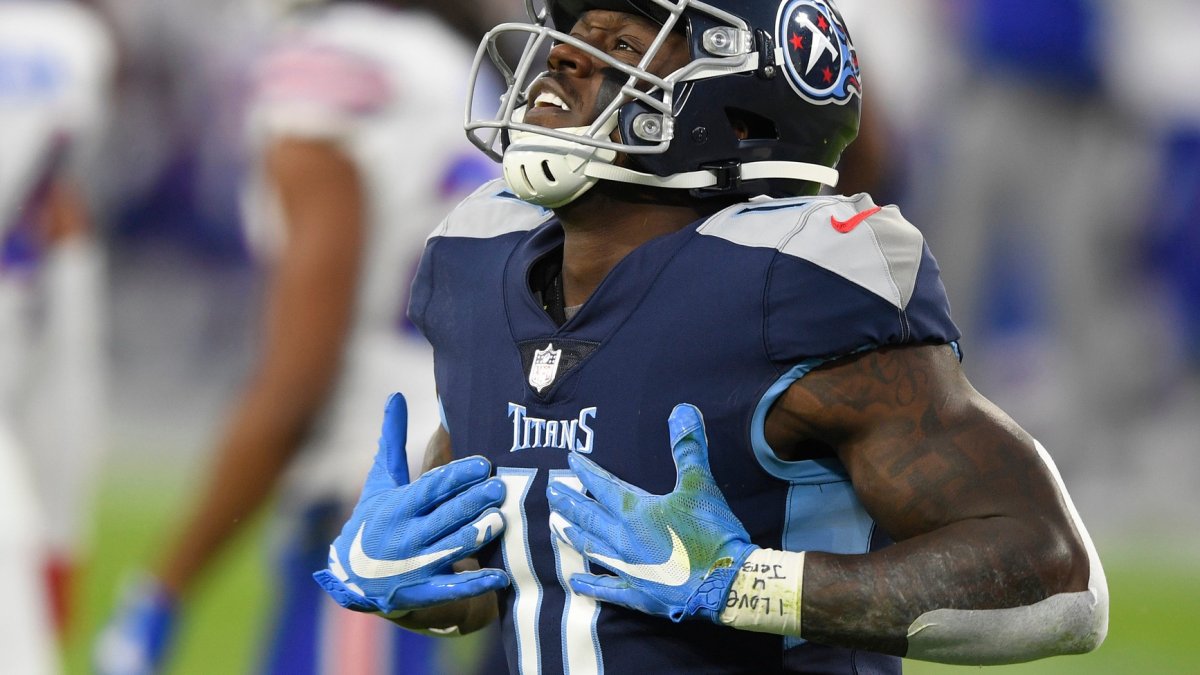The Tennessee Titans offense has gone through a metamorphosis this offseason. Key contributors like offensive coordinator Arthur Smith, wide receiver Corey Davis and tight end Jonnu Smith have all departed, leaving questions about how the organization would retool.
Those questions were answered in June when the Titans traded for Julio Jones, pairing the star veteran with young stud A.J. Brown and creating one of the best wide receiver duos in the NFL. Of course, Ryan Tannehill will also have the likes of tight end Anthony Firkser, former Los Angeles Rams wide receiver Josh Reynolds and 2021 Day 3 wide receivers Dez Fitzpatrick and Racey McMath at his disposal.
Still, the 2021 Tennessee Titans offense will run through Jones, Brown and running back Derrick Henry, providing plenty of fantasy points along the way.
Subscribe to
2021 Team Preview
Landing Jones was a massive and crucial move — he'll help Tannehill maintain his uber-effecient ways.
When healthy in 2020, Jones showed no signs of slowing down, finishing fourth in yards per route run (2.60) and averaging 19 fantasy points and 100 receiving yards per game in seven games with at least a 75% snap share.
Pairing such an elite receiver with the NFL leader in passer rating (108.9), yards per attempt (8.3) and fantasy points scored above expectation over the past two seasons is going to make the transition from Arthur Smith to new offensive coordinator Todd Downing as smooth as possible.
For those unfamiliar, Downing earned PFF’s quarterback coach of the year accolade in 2015 after helping Derek Carr ascend from a fringe starting QB as a rookie to a legitimate franchise quarterback in Year 2.
There’s no denying that the shift in play callers — in addition to personnel moves — will change how the Titans offense operates in 2021 to some extent. Downing has explicitly stated that Henry is the identity of the offense. Fantasy gamers can’t go wrong drafting Henry with a top-five pick, especially with the chance that the big back sees additional work in the passing game.
In Downing’s single season as an offensive coordinator in 2017, his Raiders offense ranked ninth in targets to running backs. That team also ranked fourth (72%) in 11 personnel (three-wide receiver sets) — a formation Smith didn't use often last season (44%, 29th).
It’s easy to envision the Titans running more three-wide-receiver sets considering the team only added wide receivers during the offseason and failed to replace tight ends Jonnu Smith or MyCole Pruitt outside of internal promotions. That bodes well for the upside of this team’s passing attack.
Tannehill’s passer rating (107.8) in 11 personnel ranks first and his air yards percentage (64%) second since 2019. It’s impressive that his passer rating is slightly better than his rating from 12 personnel (105.6) despite the major discrepancy in play-action usage.
From 11 personnel, Tannehill used play-action on just 16% of his dropbacks (26th in the league) — a dramatic fall from 53% in 12 personnel (eighth). Tannehill’s elite passing numbers in wide receiver-heavy formations bodes well for both Brown and Jones.

VALUES
WR A.J. BROWN
WR JULIO JONES
There's some uncertainty around how the targets will be distributed among two alpha wide receivers, which has suppressed both players' ADP and has made them great values. Brown routinely falls to the 2-3 turn, and that’s unwarranted.
Jones's presence coming off a 23% target share last year in Atlanta makes it tough to peg Brown as an overall fantasy WR1 candidate, but he is still more than capable of putting up monster fantasy numbers alongside Jones.
Remember that Calvin Ridley averaged more fantasy points per game with Jones (23.3) than without (19.8) last year. Jones’ presence lifts the entire offense in terms of scoring opportunities.
The lack of high-end volume might make Brown’s production more volatile, but he will put up massive fantasy weeks with defenses forced to direct their attention to Jones.
When defenses played man coverage on Ridley last season with Jones on the field, they paid dearly. He generated a perfect 158.3 passer rating and an insane 3.34 yards per route run.
The overall ambiguity of Jones’ role in the Titans’ offense has caused him to fall in drafts, making him an unreal value. Jones’ stellar splits from last season suggest that he’s far from washed, and the market is overlooking the fact that Tennessee was one of the few top landing spots based on vacated opportunities. The Titans rank second in vacated air yards (2,351) and third in vacated targets (226).
There’s more than enough passing volume to go around in an offense that projects to be concentrated on its top two pass-catchers. Last season, Tennessee was one of only eight teams with two receivers over a 20% target share. No one else on the roster saw higher than a 14% target share.
During Downing’s prior gigs with the Raiders, the offense heavily featured two top wide receivers, Amari Cooper and Michael Crabtree. The pairing averaged a combined 45% target share from 2015 to 2017.
SLEEPERS
TE ANTHONY FIRKSER
Jones’ addition puts a damper on the Anthony Firkser late-round breakout hype train, which is why he falls into the sleeper category.
He was a glorified slot receiver last season (71% slot snap rate), and his 80% target rate on slot snaps ranked first at the tight end position. Firkser was also extremely productive when given chances.
In the two games last season in which Jonnu Smith saw a sub-50% snap share or sat out entirely, Firkser averaged 17.7 fantasy points. Smith ranked No. 1 in end-zone target rate (46%) among NFL tight ends in 2020, so there should be opportunity here.
Firkser is a great tight end to draft late as the No. 1 pass-catching TE option — he should be running routes on the majority of the team’s passing downs. Firkser pass-blocked on just 1.2% of his passing play snaps last season, the position's third-lowest mark.
Downing has been the team’s tight ends coach since 2019, so he is familiar with Firkser’s skill set. Downing’s Raiders had a big role for tight end Jared Cook, who finished second in routes from the slot at tight end in 2017.
RB Darrynton Evans
A 2019 third-round pick out of Appalachian State, Darrynton Evans should slide right into the No. 2 running back role behind Henry. Injuries derailed his rookie campaign (17 touches), but he flashed in Week 15 with 57 yards from scrimmage and a receiving touchdown from the 3-yard line.
Evans could carve out a role as a change-of-pace back on third downs, but there’s only so much fantasy juice to squeeze from that type of limited role.
Ultimately, the second-year running back needs an injury to the Big Dog to gain fantasy relevance. If Henry were to miss time, Evans would be a potential league-winning running back as the favorite to take over the Titans backfield.
Evans is explosive, possesses a three-down skill set and commanded a heavy workload in 2019 (256 carries). He also posted the third-most runs of 20-plus yards from 2018-2019, so the home-run hitting ability is there.
Evans is a bit off the radar because of an essential redshirt rookie season, but the upside he could deliver is easily worth a last-round pick to stash on fantasy squads.
Don't sleep on the AFC South ???? pic.twitter.com/jFkI2rk1ab
— PFF Fantasy Football (@PFF_Fantasy) July 1, 2021



 © 2025 PFF - all rights reserved.
© 2025 PFF - all rights reserved.